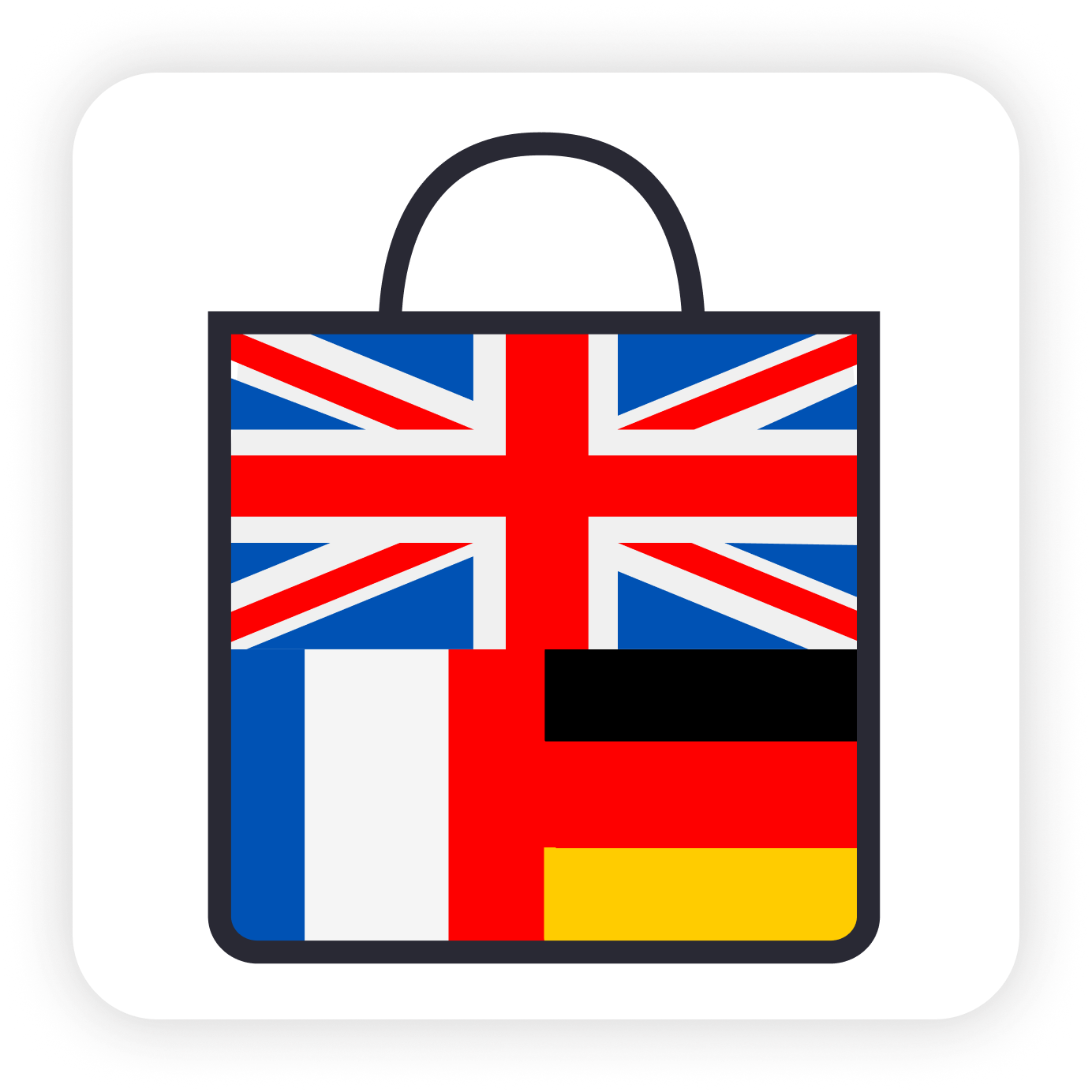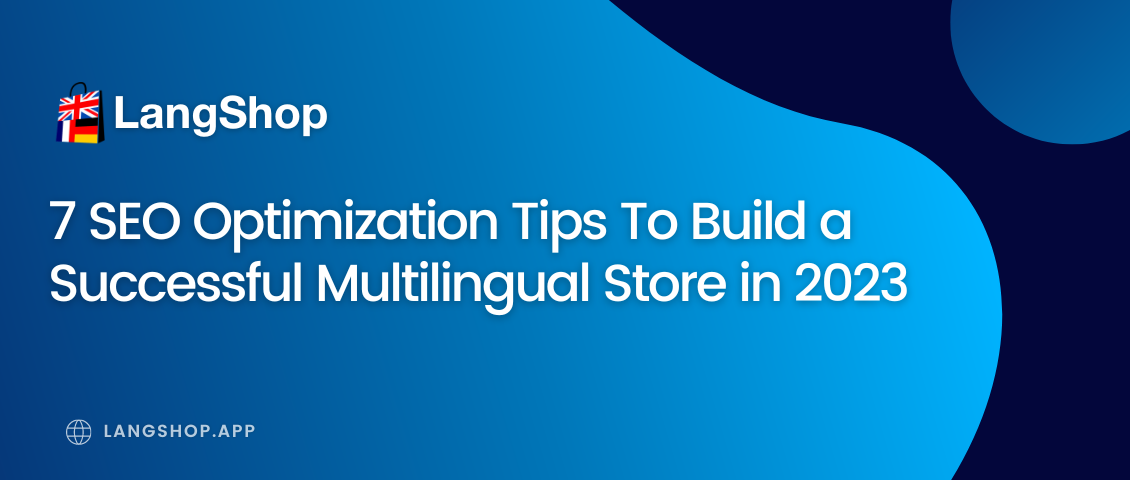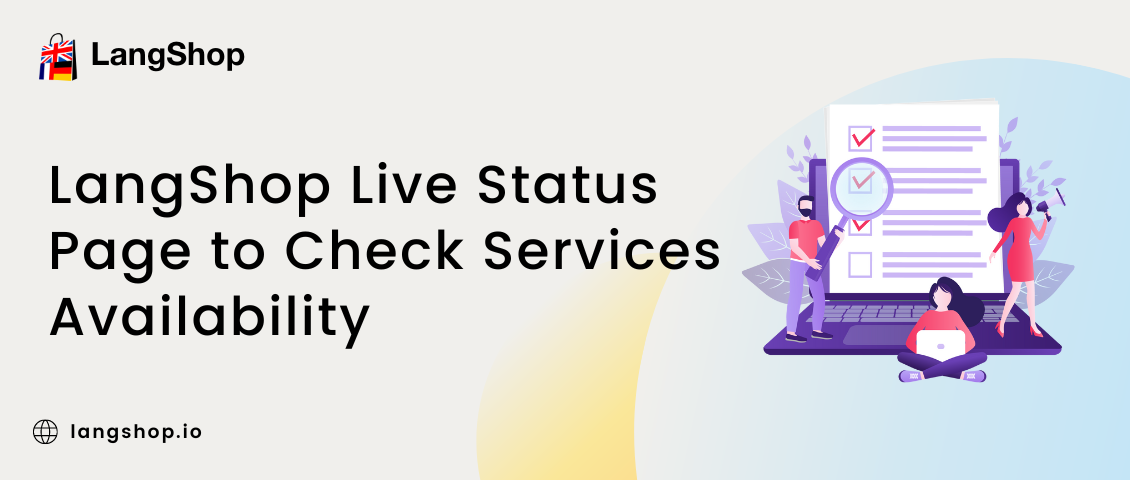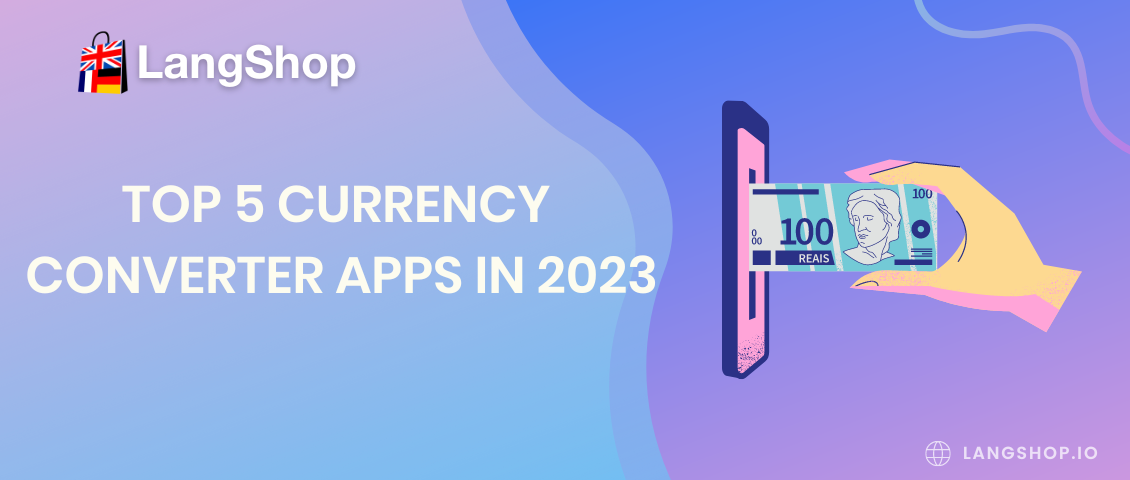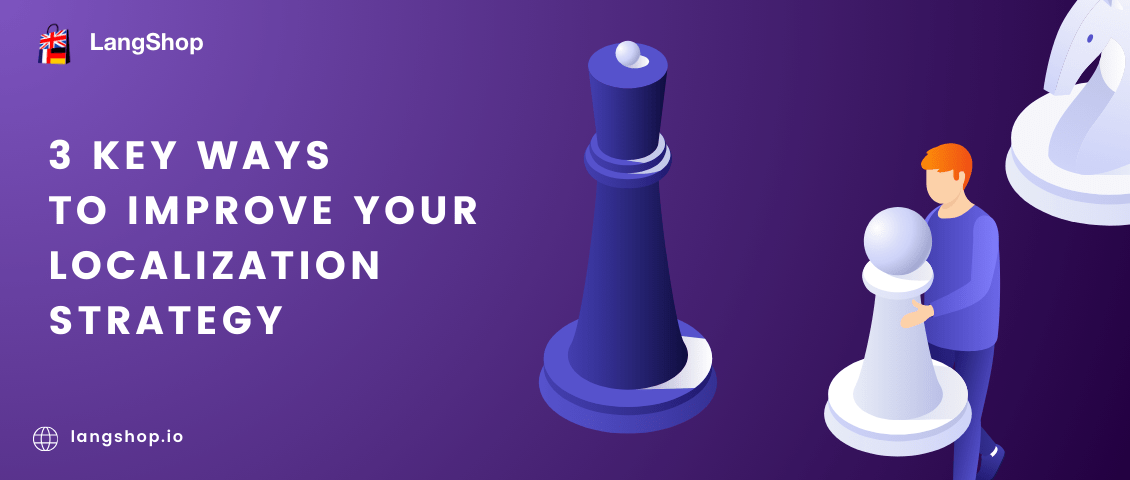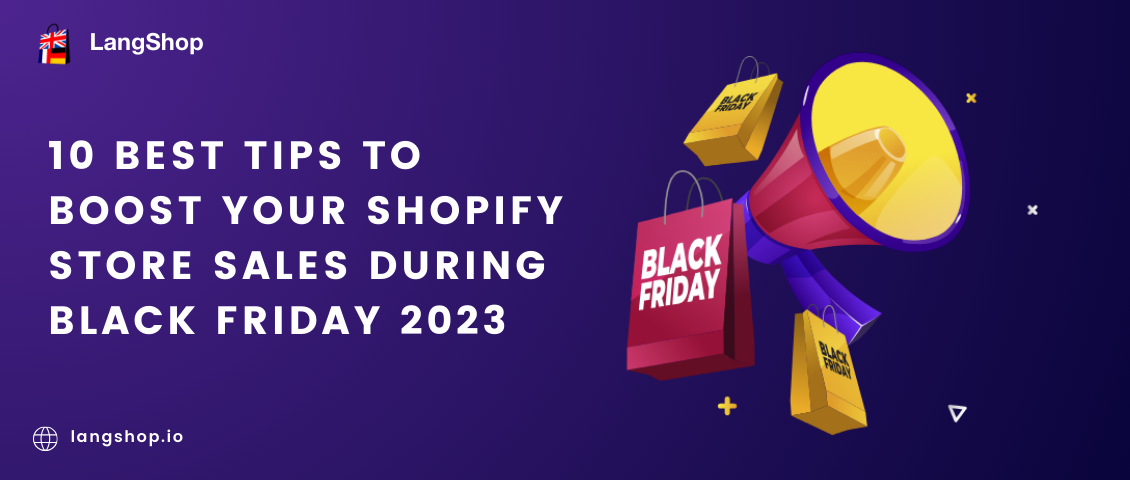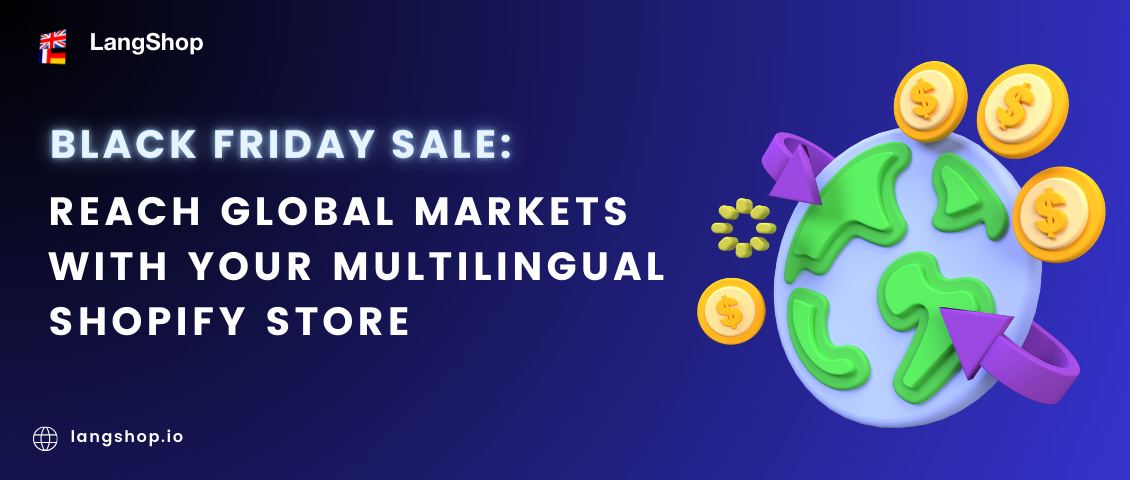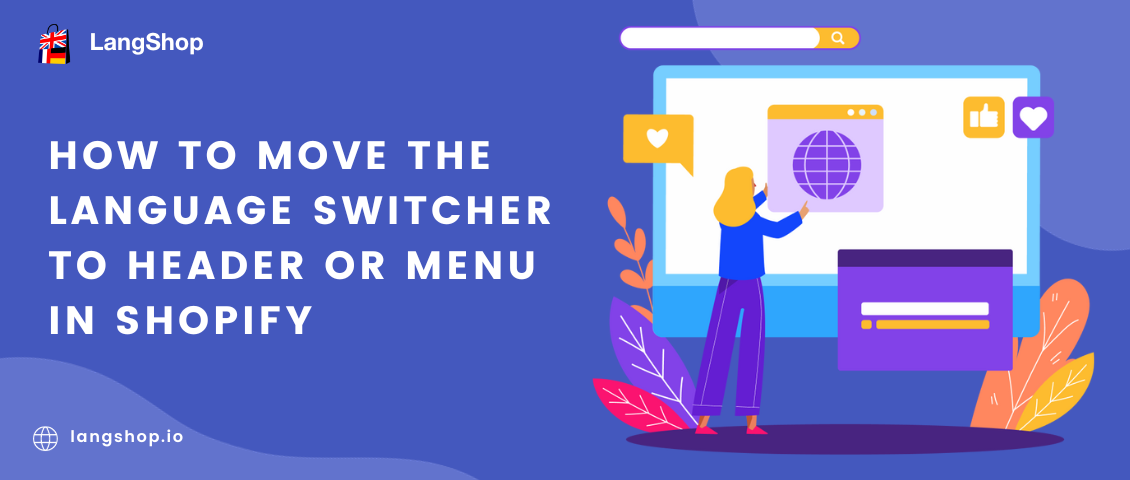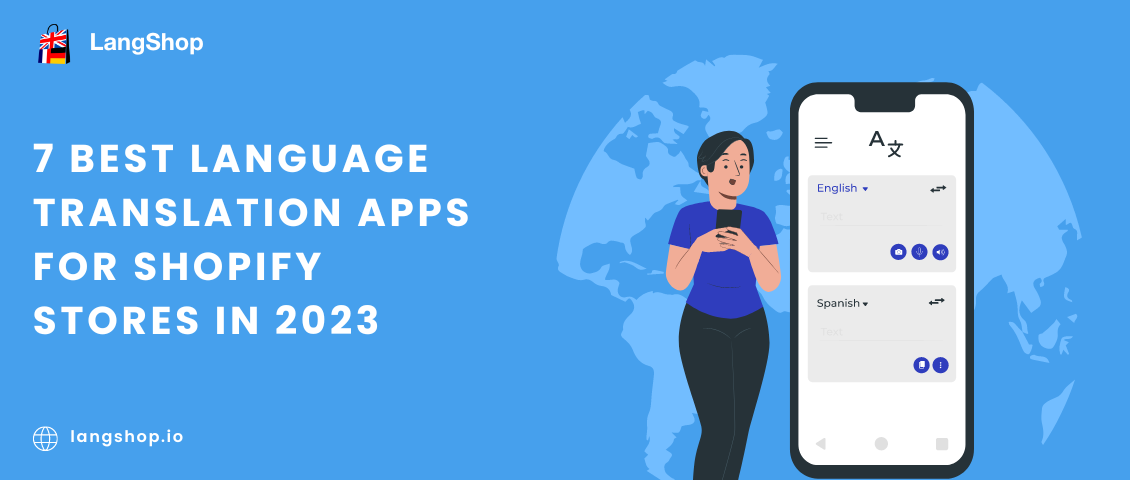You have a relatively successful English-speaking website; however, the audience coverage is nowhere near as expansive as it could be. The United States, as well as the majority of European countries, is multinational and multilingual. The Census Bureau’s research states 21.9% of people in the US don’t speak English natively! So, if you have a single language store, you are not targeting 72 million potential customers. The figures are impressive, aren’t they?
What’s more impressive – how simple of a solution there is. A multilingual website helps to extend your local market and tap into new ones for your business. It attracts more shoppers and has the potential to increase revenue significantly.
Content translation for Shopify users is something that is accomplished in a few simple clicks with a translation app, like LangShop. Meanwhile, there is one more important detail to consider search engine optimization (SEO). We’ve curated the 7 top-rated tips to ensure your multilingual SEO will perform. But first, let’s review how SEO works for other languages.
What is multilingual SEO?
Search engine optimization is the process of improving website position in search ranking. Multilingual SEO optimizes the website to match search queries in different languages, making your store discoverable, driving more traffic, and sales revenue.
Multilingual SEO helps international shoppers find your products and services after adding additional languages to your site. However, to be successful, there are several important best multilingual SEO practices that should be implemented into your SEO strategy. Otherwise, it can cause ranking issues, and search engines deindexing website content or lowering your site in search results.
Follow these tips to do your multilingual SEO correctly.
1. Identify Your Target Search Engine
Different countries prefer different engines to surf the internet. That’s why before building a multilingual SEO strategy, it’s essential to check which search engine you’re going to target. For example, the Japanese audience prefers Google and Yahoo, while the Chinese choose Baidu as a search engine. Learning your target engine, you learn more about the target audience, explore their queries and identify keywords.

2. Use Different URLs for Each Language Version of the Page
One of the main recommendations provided by Google about creating multilingual websites is using dedicated URLs with language indicators. These sorts of URLs help search engines to identify language versions.
The language indicator can be placed in different parts of the URL depending on domain structure:
- The top-level domain (www.shop.it) is usually used for localization by country.
- Subdomain (www.it.shop.com) can be used for locales when a single domain has already been bought.
- Subdirectory (www.shop.com/it) has one domain name system entry, so you can’t host sites in multiple regions for several locales.
When publishing language in LangShop, our translation app, Shopify automatically creates a dedicated URL with a language indicator for each translated page in your store.

3. Translate and Localize Metadata
It’s not enough to translate website content, metadata should also be paid much attention to. It’s a large piece of the website, which helps shoppers to find your goods and services in the vastness of the internet. That’s why new targeted audiences, as well as search engines, should understand the meta title, meta description, keywords, etc.
To translate your metadata with LangShop go to Translations > Meta Tags. Here you can choose the desired translation method and languages.
However, SEO research to target the most popular searches in one country can be different from the same search for another country. It means that for example, English keywords can be of low value for the Chinese. In this case, keywords localization is crucial. To find the keywords for the new targeted audience and if they are different, use a manual translation method to implement new meta tags or resource tags into the Chinese website version.

4. Don’t Mix Languages on the Same Page
Search engines use the visible content of the page to determine the language version. The language in this case is used as a ranking factor. However, a lot of websites prefer to translate only boilerplate text, leaving navigation or testimonial sections untranslated. Such a language diversity on one page can create a bad user experience and cause multiple issues for your SEO.
5. Prefer switchers.
A lot of Shopify translation apps boast of having automatic language determiners and abandoning old good switchers. However, the automatic language redirection prevents the users AND search engines from viewing all the website language versions. Without switchers (or language selectors) bilingual countries will face several issues when for example English-speaking Hindus have to deal with Hindi, or French-speaking Canadians are lost in English content.
But how to announce especially inattentive customers about available language options? LangShop offers language and currency suggestion banners or pop-up messages, as well as highly-customizable switchers both language and currency, which can be set of different types, styles, and positions.

6. Apply hreflang Tags
The coded relatives of the language switchers are hreflang tags. They are HTML attributes, which help search engines to identify the language of the page and the regions it is targeted for. In other words, hreflang tags are used to display to the users the correct version of the page. That’s why these tags are usually added to each page individually or included through a sitemap.
When using our SEO-bias translation app, Shopify automatically adds meta tags and hreflang tags and includes all published languages in sitemaps.
7. Optimize your website.
What you can also do for your search engine optimization is to optimize the website load. For the last years, load time has become an essential ranking factor for such search engines like Google and Yandex. Besides, it influences customers’ perception: nobody likes to wait, especially when it comes to website loading.
There are some solutions you can apply to speed up your webstore load: use a good web hosting plan, enable caching, use a content delivery network or optimize your images. The last practice can be done perfectly well with Minifier, which compresses images saving their quality. Here you also can set optimization preferences and receive optimization results reports once a week to estimate its work.
Final Thoughts
While building an SEO strategy, try to take into account the wants and needs of your potential audience, search engines rules, and your customization possibilities. Your translation app will assist you at every step, supplying your multilingual Shopify store with SEO-friendly functionality. With it, you can reach new heights and expand your business.
Find more information about LangShop features on our Help Center.
